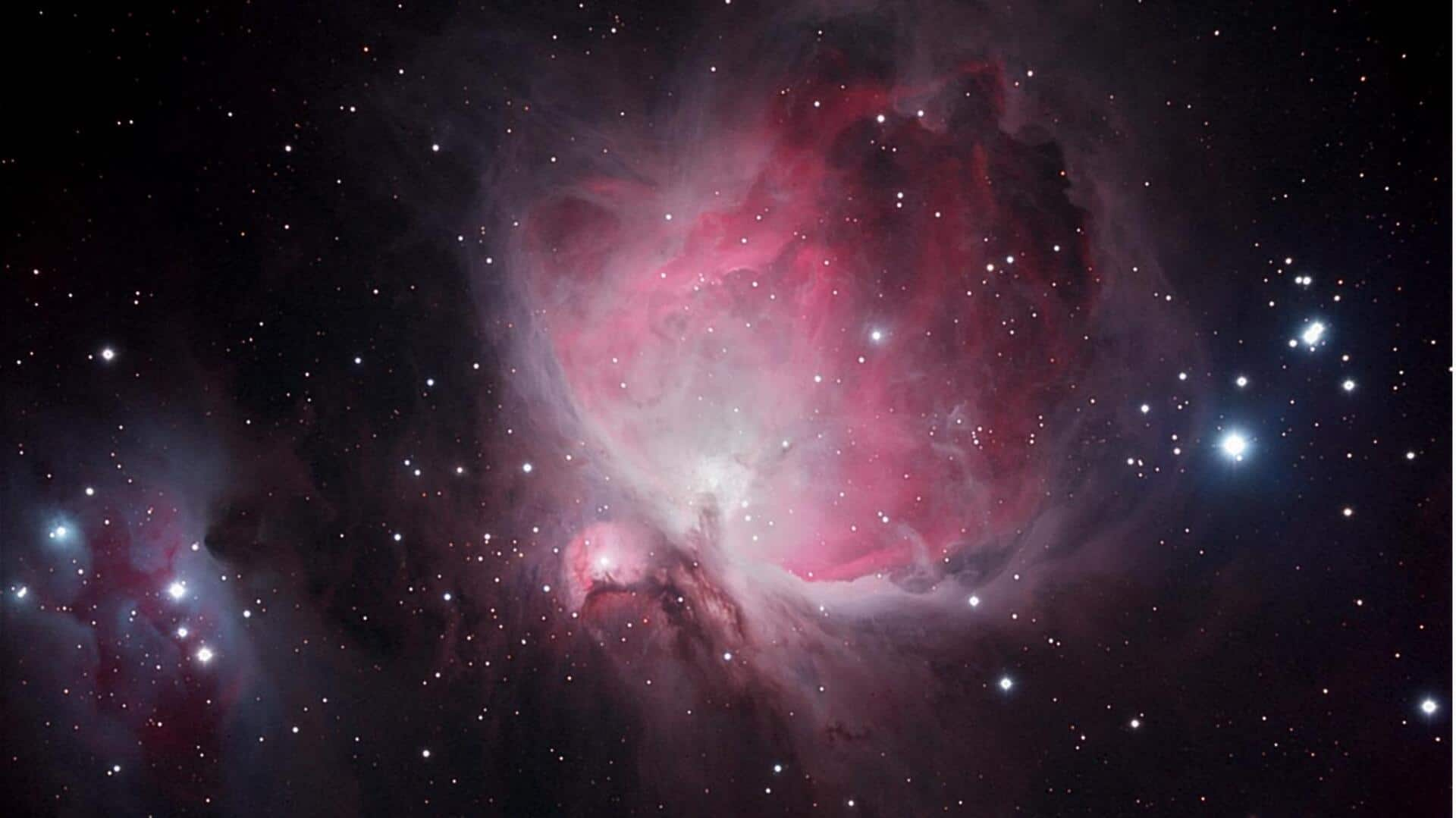
Orion Nebula, Pleiades, Hyades may have a common stellar origin
What's the story
A new study has suggested that the Orion Nebula, Pleiades, and Hyades star clusters are different phases of the same stellar system. The research was conducted by a team of astrophysicists from the Institute for Advanced Studies in Basic Sciences in Iran, and the University of Bonn. The findings were published in the Monthly Notices of the Royal Astronomical Society.
Stellar evolution
Details about the 3 star clusters
The Orion Nebula Cluster (ONC) is one of the youngest and most active star-forming places in our galaxy. At only 2.5 million years old and about 1,350 light-years away, it hosts thousands of young stars that are surrounded by a residual gas cloud from which they were formed. The Pleiades or Seven Sisters cluster is around 100 million years old with widely scattered stars, while Hyades is about 700 million years old with even fewer and more dispersed stars.
Research insights
All 3 clusters originated from the same predecessor
The researchers' precise stellar dynamics calculations indicate that all three star clusters originated from the same predecessor. "The Orion Nebula, Pleiades and Hyades are like three different photos of the same person," said Professor Dr. Pavel Kroupa from the University of Bonn. He added these clusters represent different ages in a star system's life cycle: baby (ONC), adolescent (Pleiades), and elderly (Hyades).
Evolutionary modeling
The team is modeling this life cycle using simulations
The team, led by Dr. Ghasem Safaei from the IASBS, is modeling this life cycle using powerful computer simulations. These simulations track a star cluster's evolution from its formation in a gas-rich environment to its gradual expansion and aging phase when it loses gas and stars to its surroundings. The results match well with observed characteristics like size, mass, and structure of the ONC, Pleiades, and Hyades at different stages of their lives.
Research implications
Study could help understand other star clusters' origins
The study provides valuable insights into how star clusters form and evolve, highlighting the delicate balance between internal dynamics and external forces such as the Milky Way's gravitational pull. The researchers have also shown how modern theoretical simulations can be integrated with real observations. This work could pave the way for a better understanding of other star clusters' origins, and improve models illustrating stars' evolution along with their environments over time.